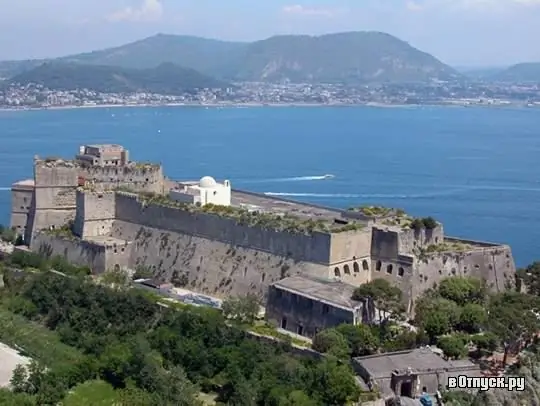
Description of the attraction
Baia Castle and the Phlegrean Fields Museum are one of the few places in Europe where archeology, history, myths and even geology are intertwined in a very small area (in the western part of the Gulf of Naples)! Baja Castle, which can also be called a fortress, rises above the surrounding area - today it houses the Phlegrean Fields Museum. It stands at the western end of the Gulf of Naples at the Cape of Capo Miseno near Cuma, the first permanent Greek colony on the Apennine Peninsula. Around the castle are the ruins of the great Porta Giulio - the home port of the western fleet of Ancient Rome, now flooded and turned into an underwater archaeological park. You can explore these ruins on a glass bottom boat tour or dive. Also preserved are numerous fragments of ancient Roman villas, temples and cisterns, which are scattered throughout the territory. In the immediate vicinity of the castle is the place where, according to Virgil, Mizenus, the master of musical instruments, challenged the god of the seas Triton, and even further away is the lake Lago Averno, where the same Virgil placed the entrance to hell.
For centuries - from the 16th century until the unification of Italy in 1861 - Baja Castle was an important defensive structure on the approaches to Naples, the capital of the Kingdom of the Two Sicilies. The entire complex covers an area of about 45 thousand square meters. at an altitude of 94 meters above sea level. Architecturally, it is a mixture of styles, as it was built in the 1490s by the Aragonese dynasty to protect their possessions from the attacks of the French king Charles VIII and was subsequently expanded and rebuilt. The last time it was reconstructed was at the end of the 18th century. In addition to being one of the most impressive fortresses on the coast of the Gulf of Naples, Baja Castle served other functions - diplomatic, cultural, scientific and even corrective. Guests of the kingdom stayed in it, one of the first laboratories for the study of volcanism on the territory of the Phlegraean fields was located, and even a prison! In 1927, an orphanage was opened in the castle for the children of soldiers who died during the First World War. Then the building was abandoned for a long time, and after the earthquake of 1980, those whose houses were destroyed found refuge in it.
In 1993, Bahia Castle was purchased by the Department of Archeology and the Museum of the Phlegrean Fields was opened there. The three floors of the north tower are dedicated not only to the history of the castle itself, but also to the archaeological past of the vast region of Campi Flegrei. Here you can see the reconstruction of a real "sachellum" - a small ancient Roman temple discovered in 1986 in the waters of Punta Sarparella, a reconstruction of a nymph with statues of the emperor Claudius and Ulysses, plaster casts, etc.
Description added:
Lyudmila Pirozhenko 2016-03-01
The exposition of the museum is interesting because in it, as, indeed, in other museums far from big cities and well-trodden tourist routes, you can see rare things. Walking through the halls that tell about the ancient Greek period, consider what is painted on the vases. Everyday life of the city
Show full text The exposition of the museum is interesting in that it, as, indeed, in other museums far from big cities and well-trodden tourist routes, you can see rare things. Walking through the halls that tell about the ancient Greek period, consider what is painted on the vases. Daily city life, banquets, women's gatherings, religious rituals, fashion clothes and battles. Apparently, the artists were local and depicted precisely the life of the city in which they lived.
A little further away, a Samnite burial has been restored with portraits of the deceased and his wife, amazing in beauty and realism. The robbers, being afraid of glances, spoiled some of the characters' faces.
In the museum you can also see the reconstruction of the villa, parts of which were found under the castle itself, the serapeum, which is located in Pozzuoli, as well as the nymphaeum of Emperor Claudius, which is now at the bottom of the bay. Here you will also see the panels that were used for the ceilings of Roman villas, as well as the remains of colorful mosaics.
Going further, pay attention to the coins that were used to pay for the entrance to the baths. You will not find this in other museums in Campania.
The last part of the exhibition is dedicated to the Pozzuoli area, which suffered greatly during the last events of Bradizism in the 1980s. Modern residential buildings there are simply “inscribed” in the remains of buildings from the Roman period. The area is closed for visits, and residents are settled in the surrounding villages.
Along the way, do not forget about the structure of the fortress itself, which, of course, is not as ancient as the wonderful works of antiquity, collected in it, but still retains as they were, the premises intended for the life of the soldiers, which seems to us quite unusual today.
The museum is closed on Monday and there is a charge for admission on weekends and holidays. It is located far from public transport, so if you are not fond of long walks, it is better to plan your visit if you have a car.
Hide text






